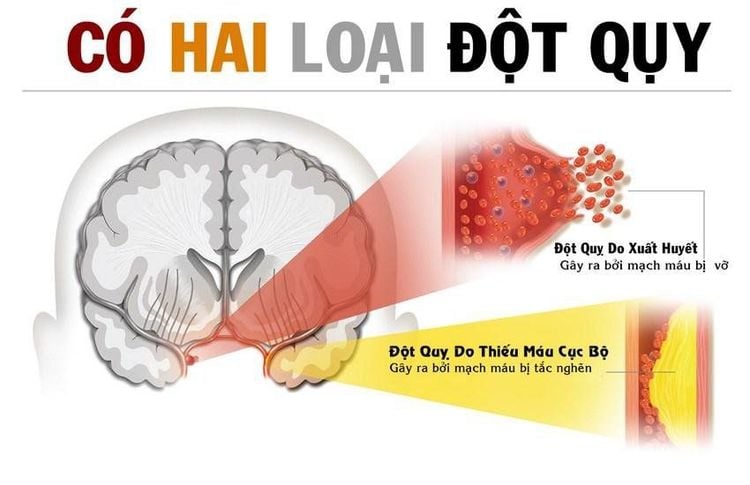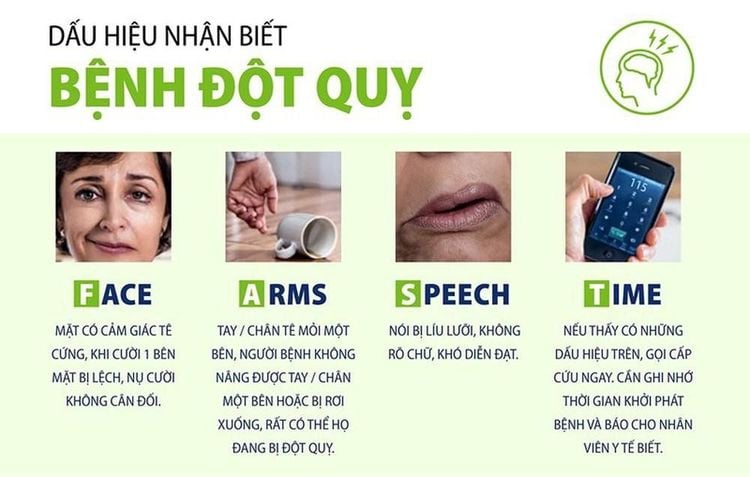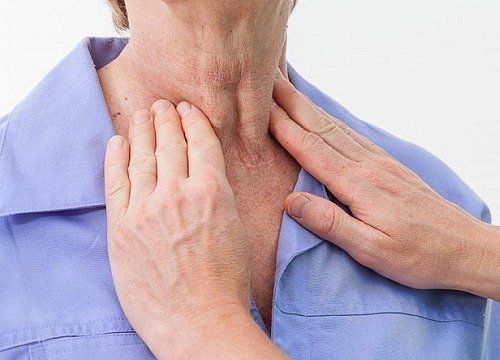This is an automatically translated article.
The article is expertly consulted by Dr. Ton That Tri Dung - Head of Department of Medical Examination & Internal Medicine, Vinmec Danang International Hospital.1. How dangerous is a brain stroke?
A stroke causes the brain to be deprived of oxygen and brain cells to die after only a few minutes. After a stroke occurs, every minute that passes, nearly 2 million brain cells die, making the patient about 3 weeks older. Therefore, "time is the Brain". The patient needs to be treated as soon as possible and the only treatment is to "reperfuse the brain" as quickly as possible.People with a stroke can become paralyzed, go into a coma, and even die. In Vietnam, stroke is not only a leading cause of death but also a disability for patients, an economic burden for families and society. According to the World Stroke Association, 1 in 6 people will have a stroke. In Vietnam, every year 200,000 people have a stroke, the death rate from stroke is 18% for men and 23% for women.
2. Causes of brain stroke
There are many causes of brain stroke, but strokes are most common in people with diabetes (the risk is 4 times higher than the general population), high blood pressure (the risk is 3 times that of the general population), heart disease. cardiovascular disease (6 times), dyslipidemia, people who are obese, sedentary, smoke a lot.Although brain stroke usually occurs in the elderly, today about 25% of strokes occur in young people. Stroke in young people is on an alarming increase: nearly 50% increase in the past 12 years. Especially for those who abuse beer, alcohol, tobacco, use stimulants, "office obesity"...
3. How to prevent a stroke?
Although stroke is a highly disabling and fatal disease, it is preventable.
Prevention of brain stroke is best by:
Avoiding risk factors with positive living habits: Do not abuse alcohol. Do not smoke or use stimulants. Avoid obesity by exercising daily. Avoid excessive and prolonged nervous tension. The diet should have lots of vegetables and fruits. Limit eating too salty, too much animal fat. Good control and treatment of diseases: Diabetes, hypertension, dyslipidemia, cardiovascular diseases... by measuring blood pressure daily, controlling blood sugar, blood fat...
4. What signs signal you may have a brain stroke?
Brain stroke can cause many symptoms such as headache, loss of consciousness...but we only need to remember at least one of the following three groups of signs, appearing suddenly, the risk of stroke from 90 - 95%, it is a sign of F.A.S.TFacial paralysis (Face): Mouth is deviated to one side, nose-cheek wrinkles are blurred Weakness, paralysis of arms (Arm) or legs: Unable to hold, grasp, walk Speech disorder Speech (Speech): Sudden disturbance of speech, inability to speak or speech is not clear ... as usual before. Time of illness (Time): When experiencing the above symptoms, it is necessary to call 911 immediately. Patients need to remember the time of illness to notify medical staff.

5. What to do when a loved one shows signs of stroke?
Supporting loved ones so they don't fall is the first thing to do when giving first aid to someone who has a stroke. nearest stroke treatment potential. If patient is comatose: Check for normal breathing, tachypnea, slow breathing, or apnea. If breathing stops, artificial respiration is needed to promptly supply oxygen to the brain.
6. What not to do when a loved one has a stroke
Do not arbitrarily treat the patient even with acupressure, acupuncture, or wind blows because these movements can aggravate the condition and waste time in treatment.Do not let the patient eat or drink and prevent regurgitation, it is very dangerous for the patient to inhale vomit or food into the airway.
Do not arbitrarily use antihypertensive drugs, only use antihypertensive drugs when blood pressure is > 220/120 mmHg and do not use sublingual antihypertensive drugs.

7. How is stroke treated today?
The goal is to revascularize as soon as possible: With thrombolytic therapy (rTPA) for patients presenting to the hospital early in the golden hour (less than 4.5 hours after stroke) and thrombectomy with an instrumentation mechanical (less than 6 hours after stroke). In 2018, the American Stroke Association (ASA) recommended that mechanical thrombectomy could be performed in some patients with large vessel occlusion in the brain who came to the hospital with a later time, specifically: is from 6 to 16 hours or from 16 to 24 hours with a number of specific criteria, including the mandatory criterion of infarct core less than 50-70ml, assessed by CTSCAN perfusion brain scan (CTP) which can only be performed available in generations of multi-segment computed tomography scanners such as CT 640 and specialized software. Currently, there are a number of hospitals equipped with this generation of machines, including Vinmec Da Nang.The next goals are to limit complications, find the cause of brain stroke to prevent stroke recurrence and restore nerve by rehabilitation exercise.
8. Does a stroke recur and what can be done to prevent recurrence?
The rate of stroke recurrence in the first 5 years is 25%, which means that 1 in 4 stroke survivors will have a relapse. Therefore, attention must be paid to active treatment for prevention.
Change active lifestyle, have an appropriate diet, increase exercise, exercise as well as well control risk factors: Diabetes, hypertension, cardiovascular disease, fat disorders and smoking,... is the best way to prevent brain stroke recurrence.
When you find yourself or a loved one showing signs of risk of stroke, you need to quickly contact the help of those around you and immediately call an ambulance for timely diagnosis and treatment. time.
Currently, Magnetic Resonance Imaging - MRI/MRA is considered a "golden" tool to screen for brain stroke. MRI is used to check the condition of most organs in the body, especially valuable in detailed imaging of the brain or spinal nerves. Due to the good contrast and resolution, MRI images allow to detect abnormalities hidden behind bone layers that are difficult to recognize with other imaging methods. MRI can give more accurate results than X-ray techniques (except for DSA angiography) in diagnosing brain diseases, cardiovascular diseases, strokes,... Moreover, the process MRI scans do not cause side effects like X-rays or computed tomography (CT) scans.\
Vinmec International General Hospital currently owns a 3.0 Tesla MRI system equipped with state-of-the-art equipment by GE. Healthcare (USA) with high image quality, allows comprehensive assessment, does not miss the injury but reduces the time taken to take pictures. Silent technology helps to reduce noise, create comfort and reduce stress for the client during the shooting process, resulting in better image quality and shorter imaging time. With the state-of-the-art MRI system With the application of modern methods of cerebral vascular intervention, a team of experienced and well-trained neurologists and radiologists, Vinmec is a prestigious address for stroke risk screening and screening. reliable goods.
In the past time; Vinmec has successfully treated many cases of stroke in a timely manner, leaving no sequelae: saving the life of a patient suffering from 2 consecutive strokes; Responding to foreign female tourists to escape the "death door" of a stroke;...
Please dial HOTLINE for more information or register for an appointment HERE. Download MyVinmec app to make appointments faster and to manage your bookings easily.














